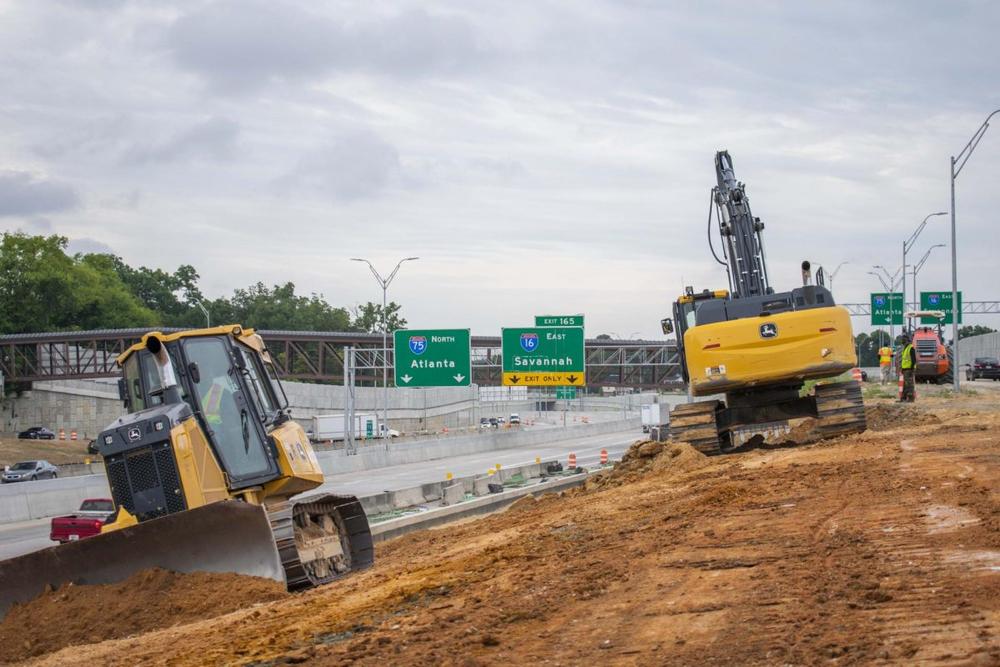
Caption
Bulldozers plow through dirt between Interstate 75 north and the new on-ramp at Hardeman Avenue that splits for motorists to enter I-75 north or I-16 east. The construction work is part of the interchange expansion project that began six years ago and has no estimated date for completion.
Credit: Laura Corley / The Macon Newsroom

